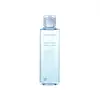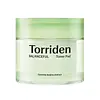What's inside
What's inside
 Key Ingredients
Key Ingredients

 Benefits
Benefits

 Concerns
Concerns

No concerns
 Ingredients Side-by-side
Ingredients Side-by-side

Water
Skin ConditioningButylene Glycol
HumectantPentylene Glycol
Skin Conditioning1,2-Hexanediol
Skin ConditioningMelia Azadirachta Leaf Extract
Skin ConditioningMelia Azadirachta Flower Extract
Skin ConditioningSodium Hyaluronate
HumectantCoccinia Indica Fruit Extract
Skin ConditioningCynanchum Atratum Extract
Skin ConditioningAloe Barbadensis Flower Extract
EmollientSolanum Melongena Fruit Extract
Skin ConditioningHyaluronic Acid
HumectantOcimum Sanctum Leaf Extract
Skin ConditioningAlthaea Rosea Flower Extract
Skin ConditioningCorallina Officinalis Extract
Skin ConditioningCurcuma Longa Root Extract
MaskingHydrolyzed Hyaluronic Acid
HumectantBetaine
HumectantPanthenol
Skin ConditioningEthylhexylglycerin
Skin ConditioningAdenosine
Skin ConditioningGlycerin
HumectantCitric Acid
BufferingSodium Citrate
BufferingAllantoin
Skin ConditioningSodium Phytate
Acetyl Glucosamine
Skin ConditioningHydroxyacetophenone
AntioxidantSodium Hyaluronate Crosspolymer
HumectantTocopherol
AntioxidantCaprylyl Glycol
EmollientXanthan Gum
EmulsifyingWater, Butylene Glycol, Pentylene Glycol, 1,2-Hexanediol, Melia Azadirachta Leaf Extract, Melia Azadirachta Flower Extract, Sodium Hyaluronate, Coccinia Indica Fruit Extract, Cynanchum Atratum Extract, Aloe Barbadensis Flower Extract, Solanum Melongena Fruit Extract, Hyaluronic Acid, Ocimum Sanctum Leaf Extract, Althaea Rosea Flower Extract, Corallina Officinalis Extract, Curcuma Longa Root Extract, Hydrolyzed Hyaluronic Acid, Betaine, Panthenol, Ethylhexylglycerin, Adenosine, Glycerin, Citric Acid, Sodium Citrate, Allantoin, Sodium Phytate, Acetyl Glucosamine, Hydroxyacetophenone, Sodium Hyaluronate Crosspolymer, Tocopherol, Caprylyl Glycol, Xanthan Gum
Water
Skin ConditioningDipropylene Glycol
HumectantButylene Glycol
HumectantGluconolactone
Skin ConditioningPanthenol
Skin ConditioningAllantoin
Skin ConditioningSodium Hyaluronate
HumectantCentella Asiatica Extract
CleansingMadecassoside
AntioxidantAsiatic Acid
Skin ConditioningMadecassic Acid
Skin ConditioningAsiaticoside
AntioxidantCapryloyl Salicylic Acid
ExfoliatingHamamelis Virginiana Extract
AntiseborrhoeicAlthaea Rosea Flower Extract
Skin ConditioningNymphaea Caerulea Flower Extract
Skin ConditioningSwertia Japonica Extract
Skin ConditioningLactobacillus Ferment
Skin ConditioningGlycerin
HumectantHydroxyacetophenone
AntioxidantPantolactone
HumectantPolyglyceryl-10 Laurate
Skin ConditioningGlyceryl Acrylate/Acrylic Acid Copolymer
HumectantPvm/Ma Copolymer
Emulsion StabilisingHydrogenated Phosphatidylcholine
EmulsifyingSucrose Stearate
EmollientSodium Guaiazulene Sulfonate
Caprylic/Capric Triglyceride
MaskingCaprylyl Glycol
EmollientCholesterol
EmollientArginine
MaskingMelia Azadirachta Flower Extract
Skin ConditioningMelia Azadirachta Leaf Extract
Skin ConditioningDipotassium Glycyrrhizate
Humectant1,2-Hexanediol
Skin ConditioningDisodium EDTA
Ethylhexylglycerin
Skin ConditioningWater, Dipropylene Glycol, Butylene Glycol, Gluconolactone, Panthenol, Allantoin, Sodium Hyaluronate, Centella Asiatica Extract, Madecassoside, Asiatic Acid, Madecassic Acid, Asiaticoside, Capryloyl Salicylic Acid, Hamamelis Virginiana Extract, Althaea Rosea Flower Extract, Nymphaea Caerulea Flower Extract, Swertia Japonica Extract, Lactobacillus Ferment, Glycerin, Hydroxyacetophenone, Pantolactone, Polyglyceryl-10 Laurate, Glyceryl Acrylate/Acrylic Acid Copolymer, Pvm/Ma Copolymer, Hydrogenated Phosphatidylcholine, Sucrose Stearate, Sodium Guaiazulene Sulfonate, Caprylic/Capric Triglyceride, Caprylyl Glycol, Cholesterol, Arginine, Melia Azadirachta Flower Extract, Melia Azadirachta Leaf Extract, Dipotassium Glycyrrhizate, 1,2-Hexanediol, Disodium EDTA, Ethylhexylglycerin
 Reviews
Reviews

Ingredients Explained
These ingredients are found in both products.
Ingredients higher up in an ingredient list are typically present in a larger amount.
1,2-Hexanediol is a synthetic liquid and another multi-functional powerhouse.
It is a:
- Humectant, drawing moisture into the skin
- Emollient, helping to soften skin
- Solvent, dispersing and stabilizing formulas
- Preservative booster, enhancing the antimicrobial activity of other preservatives
Allantoin is a soothing ingredient known for its protective and moisturizingg properties. Because of this, it is often added to products with strong active ingredients.
Studies show higher concentrations of this ingredient can promote wound healing.
Though it can be derived from the comfrey plant, allantoin is produced synthetically for cosmetic products to ensure purity.
Learn more about AllantoinThis ingredient comes from the hollyhock flower. It has skin conditioning properties.
Butylene Glycol (or BG) is used within cosmetic products for a few different reasons:
Overall, Butylene Glycol is a safe and well-rounded ingredient that works well with other ingredients.
Though this ingredient works well with most skin types, some people with sensitive skin may experience a reaction such as allergic rashes, closed comedones, or itchiness.
Learn more about Butylene GlycolCaprylyl Glycol is a humectant and emollient, meaning it attracts and preserves moisture.
It is a common ingredient in many products, especially those designed to hydrate skin. The primary benefits are retaining moisture, skin softening, and promoting a healthy skin barrier.
Though Caprylyl Glycol is an alcohol derived from fatty acids, it is not the kind that can dry out skin.
This ingredient is also used as a preservative to extend the life of products. It has slight antimicrobial properties.
Learn more about Caprylyl GlycolEthylhexylglycerin (we can't pronounce this either) is commonly used as a preservative and skin softener. It is derived from glyceryl.
You might see Ethylhexylglycerin often paired with other preservatives such as phenoxyethanol. Ethylhexylglycerin has been found to increase the effectiveness of these other preservatives.
Glycerin is already naturally found in your skin. It helps moisturize and protect your skin.
A study from 2016 found glycerin to be more effective as a humectant than AHAs and hyaluronic acid.
As a humectant, it helps the skin stay hydrated by pulling moisture to your skin. The low molecular weight of glycerin allows it to pull moisture into the deeper layers of your skin.
Hydrated skin improves your skin barrier; Your skin barrier helps protect against irritants and bacteria.
Glycerin has also been found to have antimicrobial and antiviral properties. Due to these properties, glycerin is often used in wound and burn treatments.
In cosmetics, glycerin is usually derived from plants such as soybean or palm. However, it can also be sourced from animals, such as tallow or animal fat.
This ingredient is organic, colorless, odorless, and non-toxic.
Glycerin is the name for this ingredient in American English. British English uses Glycerol/Glycerine.
Learn more about GlycerinHydroxyacetophenone is antioxidant with skin conditioning and soothing properties. It also boosts the efficiency of preservatives.
This ingredient is not irritating or sensitizing.
Melia Azadirachta Flower Extract is from the Neem tree. Neem trees originate from India.
Melia Azadirachta Flower Extract contains antioxidants. Antioxidants help fight free-radicals. Free-radicals are molecules that may damage your skin cells, such as pollution.
The flowers of this tree are lilac colored.
Learn more about Melia Azadirachta Flower ExtractMelia Azadirachta Leaf Extract is extract from the neem plant.
The leaves of this tree contain flavonoids and polyphenols. These two compounds are antioxidants, anti-inflammatory, and antibacterial. Further research is needed as to their effects when applied on skin.
Panthenol is a common ingredient that helps hydrate and soothe the skin. It is found naturally in our skin and hair.
There are two forms of panthenol: D and L.
D-panthenol is also known as dexpanthenol. Most cosmetics use dexpanthenol or a mixture of D and L-panthenol.
Panthenol is famous due to its ability to go deeper into the skin's layers. Using this ingredient has numerous pros (and no cons):
Like hyaluronic acid, panthenol is a humectant. Humectants are able to bind and hold large amounts of water to keep skin hydrated.
This ingredient works well for wound healing. It works by increasing tissue in the wound and helps close open wounds.
Once oxidized, panthenol converts to pantothenic acid. Panthothenic acid is found in all living cells.
This ingredient is also referred to as pro-vitamin B5.
Learn more about PanthenolSodium Hyaluronate is hyaluronic acid's salt form. It is commonly derived from the sodium salt of hyaluronic acid.
Like hyaluronic acid, it is great at holding water and acts as a humectant. This makes it a great skin hydrating ingredient.
Sodium Hyaluronate is naturally occurring in our bodies and is mostly found in eye fluid and joints.
These are some other common types of Hyaluronic Acid:
Learn more about Sodium HyaluronateWater. It's the most common cosmetic ingredient of all. You'll usually see it at the top of ingredient lists, meaning that it makes up the largest part of the product.
So why is it so popular? Water most often acts as a solvent - this means that it helps dissolve other ingredients into the formulation.
You'll also recognize water as that liquid we all need to stay alive. If you see this, drink a glass of water. Stay hydrated!
Learn more about Water